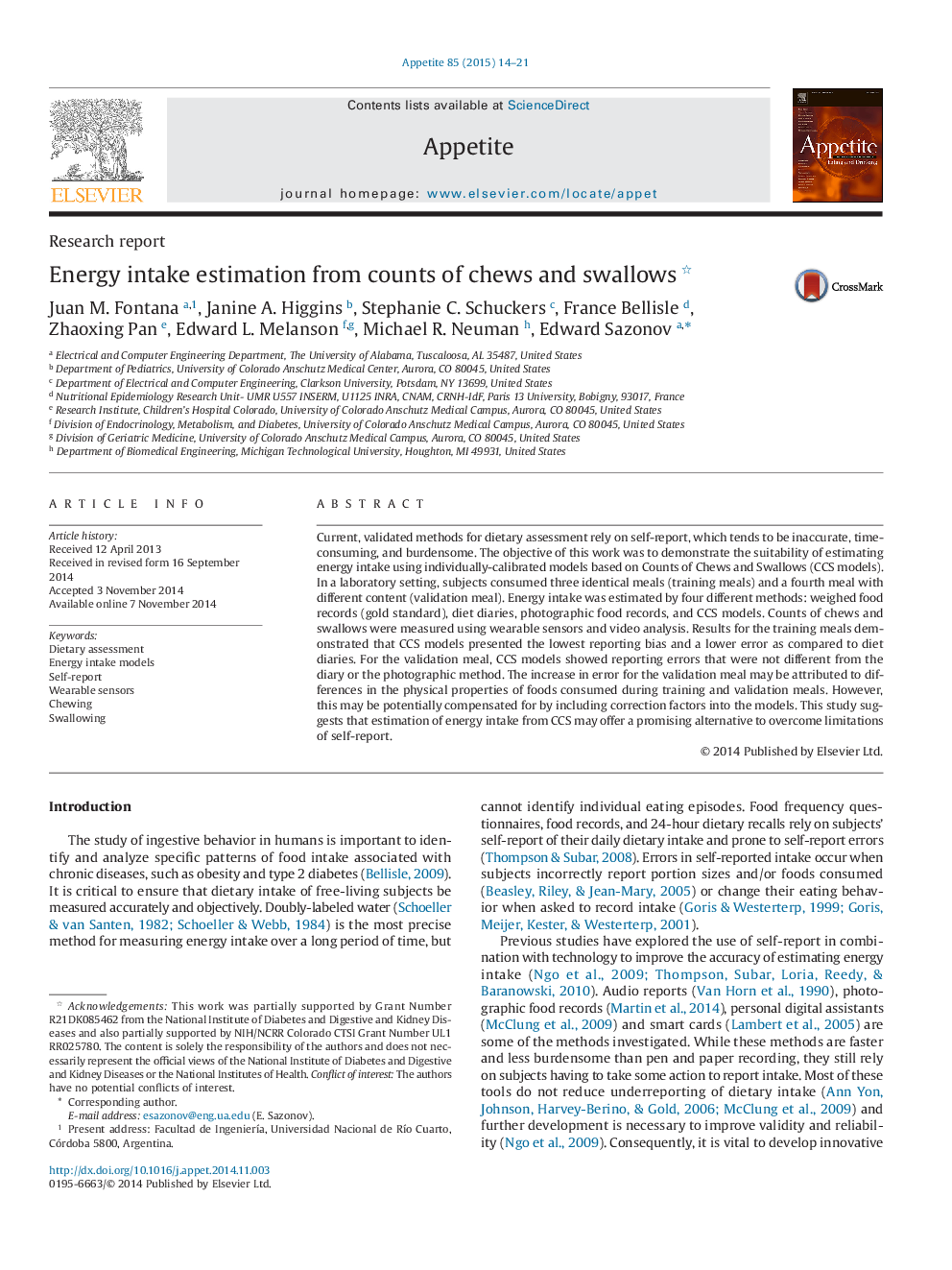| Article ID | Journal | Published Year | Pages | File Type |
|---|---|---|---|---|
| 7309334 | Appetite | 2015 | 8 Pages |
Abstract
Current, validated methods for dietary assessment rely on self-report, which tends to be inaccurate, time-consuming, and burdensome. The objective of this work was to demonstrate the suitability of estimating energy intake using individually-calibrated models based on Counts of Chews and Swallows (CCS models). In a laboratory setting, subjects consumed three identical meals (training meals) and a fourth meal with different content (validation meal). Energy intake was estimated by four different methods: weighed food records (gold standard), diet diaries, photographic food records, and CCS models. Counts of chews and swallows were measured using wearable sensors and video analysis. Results for the training meals demonstrated that CCS models presented the lowest reporting bias and a lower error as compared to diet diaries. For the validation meal, CCS models showed reporting errors that were not different from the diary or the photographic method. The increase in error for the validation meal may be attributed to differences in the physical properties of foods consumed during training and validation meals. However, this may be potentially compensated for by including correction factors into the models. This study suggests that estimation of energy intake from CCS may offer a promising alternative to overcome limitations of self-report.
Related Topics
Life Sciences
Agricultural and Biological Sciences
Food Science
Authors
Juan M. Fontana, Janine A. Higgins, Stephanie C. Schuckers, France Bellisle, Zhaoxing Pan, Edward L. Melanson, Michael R. Neuman, Edward Sazonov,
